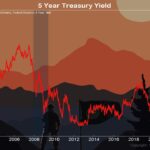
By Elnur @ Shutterstock.com
If you aren’t getting paid regularly for your investment in a company’s stock, you are taking it on faith that someday, at the precise moment you need to sell to generate cash, the price will sit at a gain for you. Buy low, sell high, right?
But what happens if there is no “high?” Stock prices can remain depressed for agonizingly long periods of time. From year-end 1965 – 1981, the Dow Jones Industrial Average was down 10%. Investors who were counting on capital appreciation to fund a comfortable retirement were short changed.
Meanwhile, those investors who demanded a margin of safety in the form of regular dividend payments fared much better.
In November of 1997, I wrote about Ben Graham, the pioneer of the idea of a margin of safety, the three-word secret to sound investing. Here’s what I told readers then:
Ben Graham’s Margin of Safety
Graham died in 1976, yet his wisdom is as fresh as if he were standing before us today. Ben Graham & Co.’s advice to investors is to evaluate a stock as if you were considering buying the entire company. Graham’s secret of sound investing can be distilled into three words—margin of safety.
Why am I focusing on Graham’s margin of safety? Because we are all happy as sin with the stock market advances of recent years, but I don’t want you to lose perspective. When I was in the institutional brokerage business with Model Roland & Co. in the early 1970s, the Dow fell by 44% in just two years. As bad a year as 1973 was—the Dow fell over 16%—it was only a warm-up for 1974. In 1974, the floor caved in. The Dow plummeted over 27%.
Sixteen Years of Falling Stock Prices
Investors tend to be a little myopic. Many investors are terrific at extrapolating the past into the future. These misguided souls are not investors at all. Rather, they are speculators. Do you know that the Dow was actually down 10% over a 16-year period from its starting point in 1965 to year-end 1981? Do you realize that the yield on the Dow today is less than 40% of its historical average? Stocks are paying an average of only 1.7%, versus the historical average of 4-1/4%. But it’s a new era, you’re thinking. Things are different today. With the Dow at 8100, the old rules no longer apply.
Well, I can tell you for sure, when you’re not getting paid to invest, you’re not getting paid. Pure and simple. Today’s common-stock investor is plunking down his hard-earned money and, in effect, saying, “I will take may gains on the come. Don’t worry about paying me anything today.” It’s the greater fool theory, not investing. I can give you lots of reasons why yield is low today. In the end, you can still say to me, reasons schmeasons, I’m not getting paid! And you would be right.
Originally posted on Youngsworldmoneyforecast.com.
If you’re willing to fight for Main Street America, click here to sign up for my free weekly email.




